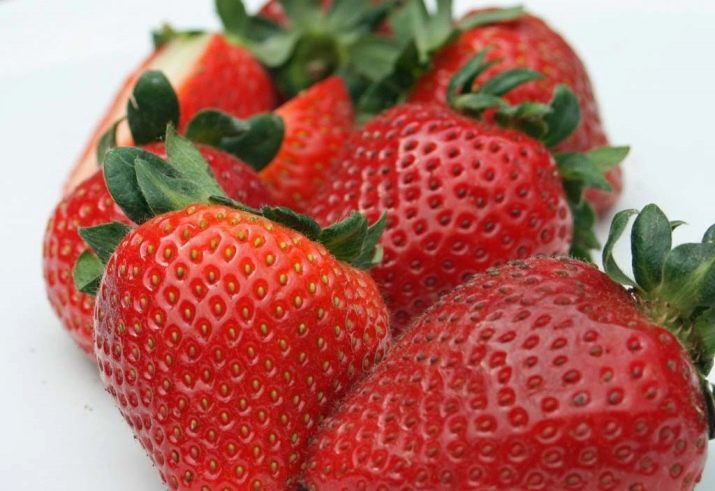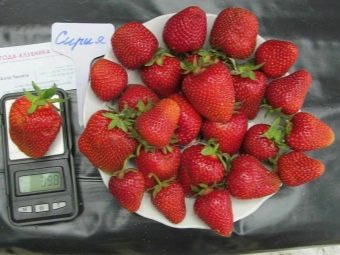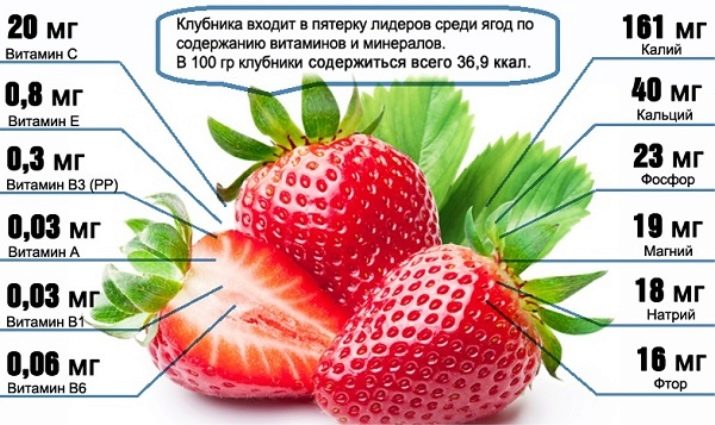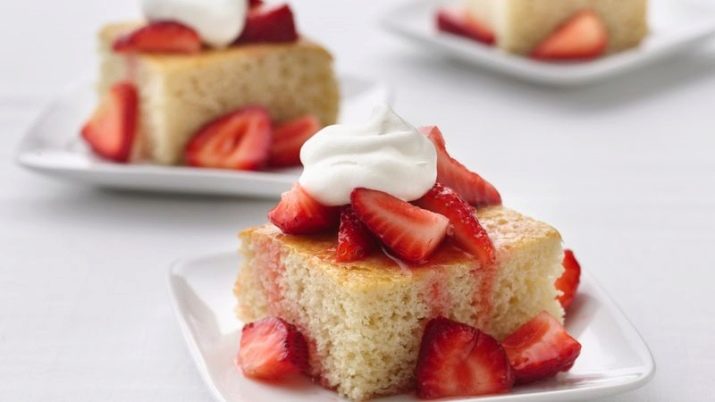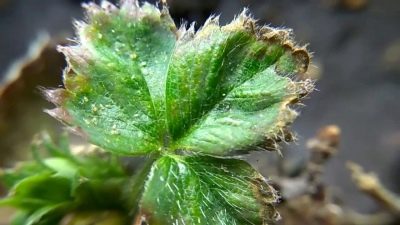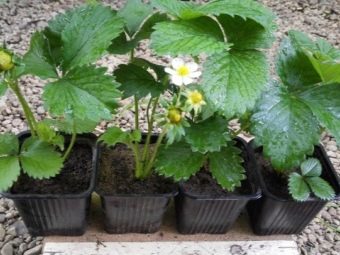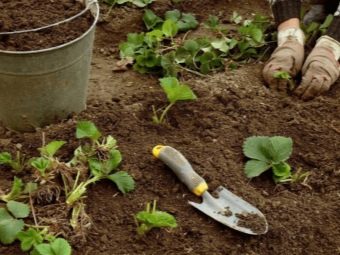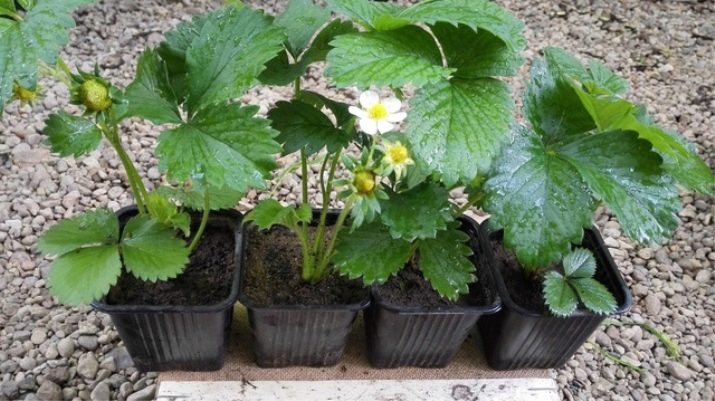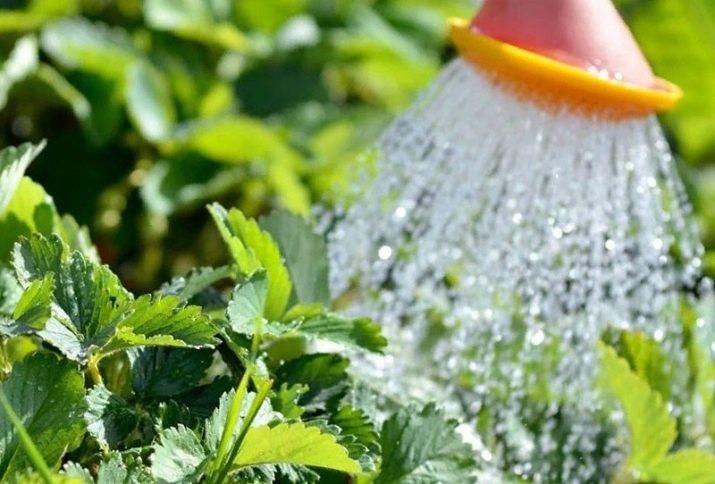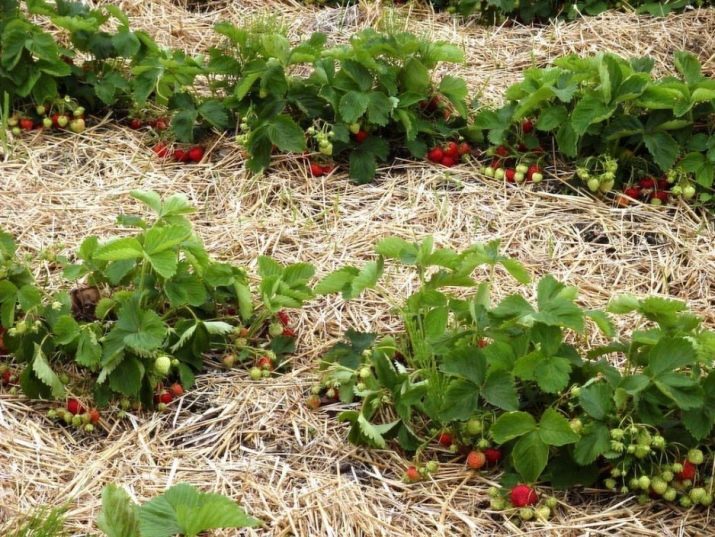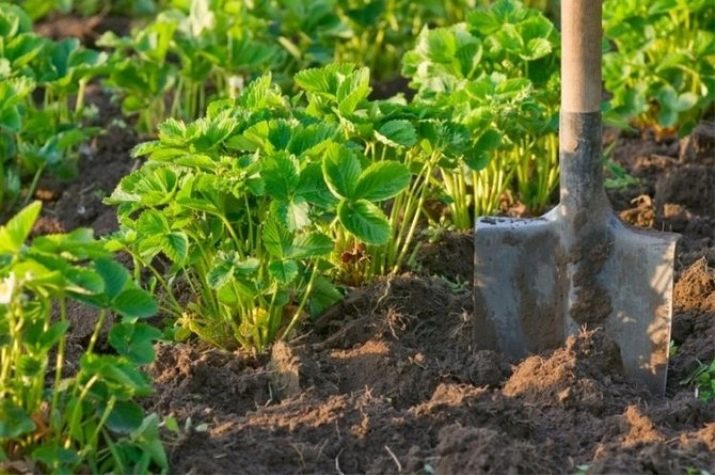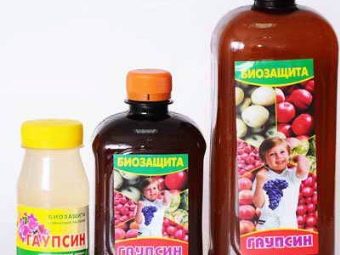Strawberry "Syria": variety description and tips on agricultural technology
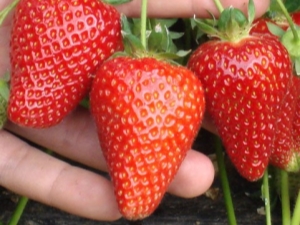
The choice of strawberry varieties is extremely important for every gardener, because if the taste of the berries obtained turns out to be sour or the amount of the crop is too small, it will mean that all the effort expended was in vain. Therefore, choosing a kind of culture, you need to thoroughly find out its characteristics. For example, many experts recommend to pay attention to the variety "Syria". Although he is not a champion in any indicators, he almost always shows himself worthily.
Variety description
Strawberry "Syria" was bred in Italy, whose inhabitants awarded the variety with such an interesting name. Garden strawberries are designed for the continental climate with cold winters, hot summer months and scant rains. The bushes grow large, tall and spreading, and the leaves are large, saturated green color, covered with small wrinkles. The specificity of the leaves allows you to hide strawberries from birds.
Peduncles also grow large and strong, with numerous snow-white flowers. Usov appears a standard amount, not hindering the development of culture, but at the same time allowing it to regularly reproduce. The average weight of one berry is twenty-five grams, and the maximum reaches forty grams.
True, it happens that under favorable conditions, a strawberry sometimes reaches sixty grams. The fruits themselves look like an elongated cone, painted in a cherry-red hue. The flesh is firm, juicy and light pink, and the taste harmoniously combines sweetness and acid. The surface of the fruit is covered with yellow seeds.
Harvesting starts in June. In the first year of Syria, the gardener gets about 200 grams from one bush, then, the next year, right up to a kilogram. This variety will bear fruit until three years after planting. Berries are rich in vitamin A, B vitamins, vitamin C and vitamin E, that is, the product is successfully used in cases where you need to strengthen the immune system, support the work of the heart, and also stimulate the production of collagen.
Calcium, potassium, sodium, magnesium and iron in their composition have a beneficial effect on cholesterol levels, the condition of the gastrointestinal tract and the functioning of other systems.
It should be mentioned that this variety is allowed for use by patients with diabetes mellitus.
Advantages and disadvantages
One of the advantages of this variety is that it has innate immunity to most typical diseases. In principle, the culture copes well with low temperatures in winter. "Syria" is often grown for commercial purposes: the fruits are large and tasty, they are not injured during transportation, they do not lose their advantages during storage and are multifunctional. Strawberries can be consumed fresh, added to desserts and pies, frozen, and processed into jams and preserves.
Strawberries are not afraid of low winter temperatures and high summer, long rains or sudden droughts. Sort "Syria" has innate immunity to many traditional fungal diseases. A plus is the fact that every year the amount of harvest increases, and the taste properties are preserved. That is, it is about the stability of fruiting.
The disadvantages of the variety "Syria" include the following facts:
- high probability of spider mite attack, which indicates the need for regular preventive actions;
- culture is very susceptible to some bacterial diseases.
Attention should be paid to this in the cultivation of the described strawberry variety.
Features agrotehnika
The breeding variety "Syria" usually occurs with the help of seeds, from which the seedlings are formed. In addition, the sockets are used or the division of the bush. Site selection must meet certain requirements. It is necessary to avoid groundwater near the surface that could damage the root system. Then the plot should be flat, ideally loamy or sandy.
If the plot is located in a valley, then you will have to form high beds and prepare a drainage layer. It is necessary to monitor so that the shadow does not interfere with the development of landings - the choice of a well-lit place is important. Pre-beds are fed with mineral solutions, wood ash, or humus. As a rule, "Syria" landed on a two-line diagram, from south to north.
The gap between the rows is 70 centimeters, and between the bushes - 50 centimeters.The holes are dug deep, and some humus and wood ash are immediately filled up in them. The exact depth will depend on the size of the strawberry roots.
Following the rule of crop rotation, it is recommended to plant strawberries “Syria” after sideratov, for example, marigolds and lupine, embedded in the ground during digging, peas and beans, greens, onions with garlic, as well as root vegetables - carrots, radishes and radishes. In no case, the culture can not be planted where previously lived tomatoes and potatoes, cucumbers and zucchini, pumpkin and cabbage. Professionals call legumes, marigolds, as well as parsley and onions with garlic as ideal neighbors. The soil should be loose, well breathable and nourishing. Best of all, "Syria" will behave in loamy, sandy sandy areas with low acidity.
Caring for the crop is fairly standard: watering, fertilizing, loosening and protection from pests. Watering is best with water that has settled during the day, because the temperature of the liquid should not be below 15 degrees Celsius. Most of “Syria” is suitable drip irrigation, with which you can enter into the soil and fertilizer. If there is no such possibility, then watering should always be organized in the evening, when the sun disappears over the horizon. The specific amount of water depends on the stage at which the strawberries are located, as well as the condition of the soil.
The process of mulching of beds is obligatory, and in the spring, mineral fertilizers should be laid out under mulch, for example, superphosphate in the amount of 40 grams per square meter or ammonium sulfate in the amount of 15 grams per square meter. Sawdust, tree bark or straw are used as mulch. If peat with needles are selected for this purpose, then it will be necessary to pre-coat the area with a thin layer of lime, otherwise the acidity of the soil will increase. Each watering is completed by loosening, allowing to transport oxygen to the roots, and weeding.
In the autumn, when the harvest is gathered, it is necessary to feed the earth with mineral fertilizers, and also to cover the beds for the winter, for example, with dry mowed grass, branches or straw. An excellent idea would be to use agrofiber - it will not only save strawberries from low temperatures, but also prevent vyprevanie in cases where the temperature of atmospheric air begins to increase. It is important not to forget about the disinfection and destruction of the remaining larvae and the dispute of diseases. Spring preparation begins with the fact that the beds are cleared of debris and sheets.
Ideally, the top layer of soil is removed, most often containing overwintering insects. In addition, it is better to handle both the bed itself and the available landings by any means. For example, it may be a 2% solution of copper sulfate or a 4% solution of Bordeaux mixture. Experts recommend to try a mixture of 3 tablespoons of used vegetable oil, 2 tablespoons of liquid soap, 2 tablespoons of vinegar and 2 tablespoons of wood ash, dissolved in 10 liters of water. Usually the solution is allowed to brew for ten minutes, after which it is filtered and used for spraying.
If we talk about fertilizing, then this part of the care of the culture occurs in 4 stages. The first fertilization is carried out when the first leaves appear, then - when the ovaries are formed, and then - at the end of the collection of fruits. Finally, the fourth dressing is done immediately before hibernation. The grade "Syria" perceives both organic chemistry, and mineral solutions.
Organic fertilizers include droppings and manure, compost and wood ash. Mineral complexes necessarily contain nitrogen, potassium and phosphorus - these are the elements that strawberries need most.
Nitrogen helps to increase the size of the fruit and their appearance. The effect of potassium is to enhance the sweetness of strawberries. Finally, phosphorus contributes to increased yields.
Among the pests "Syria" most often attacked by ticks, slugs, ants, nematodes and other insects. The easiest way to deal with them is special drugs sold in stores for gardeners. A good preventive measure can be the correct selection of neighbors - those cultures that have an unpleasant odor, often cope with insect repellency. Horticulturists of the old school are advised to treat the beds with a solution based on soap shavings and wood ash. If strawberries are hit by ants and slugs, you can try sprinkling red pepper around the bushes.
To avoid the development of diseases, many gardeners use the remedy "Fitosporin", which fights both fungi and bacterial diseases: rot, white spot, powdery mildew, and others. For example, immediately, as on the leaves of strawberry, symptoms of white spot were found, the affected parts of the plant are cut off, and it itself is treated with “Fitosporin”. Another good remedy is considered to be Guapsin, which helps prevent pest attacks.
Gardeners reviews
According to summer residents, the “Syria” variety is good enough. Harvest ripen at the right time and in the right amount. The variety is not afraid of low temperatures and rarely becomes a victim of insects. Gardeners grow strawberries for sale, as it has good product characteristics and does not suffer from traffic. Ripe berries are most often used for harvesting for the winter.
It should be noted that the harvest in the first year after planting should not be expected, but on the second plant will be pleased with a bountiful harvest. There is such a point as ease of care for the culture. For example, some gardeners need only pretreatment of plantings with ammonia and powdered wood ash so that the plants develop normally.
How to make a delicious strawberry dessert, you will learn from the following video.

